Kizhi. The wooden wonder of Russia#
by Stanislav Sedov, member of the AirPano Team that is a member of the global-geography Consortium.
6 January 2020
with kind permission of AirPano
Since our winter adventures in Finland, we have decided to include Karelia in our "Seasons" project and chosen to start with a genuine pearl of this republic, the Museum of Kizhi. It was my long-standing desire to fly above Kizhi but an ongoing restoration of the Transfiguration Church kept it away from happening. I did not like the idea of capturing a partly dismantled cathedral. And having heard that the restoration works were almost over, I started packing for the trip.

© AirPano
My last journeys across Russia led me to the idea that I need to take with me all the possible equipment to ensure successful work. Unfortunately, the quality of the tourist services in our country is at a very low level. That's why I had to prepare an entire road-train for this journey to Karelia. It contained different "men's toys" aimed to ensure the success of this expedition.
Kizhi is an island in Lake Onega. Most tourists travel there from Petrozavodsk on the board of the boat called "Meteor". There are no hotels on the island, so one can't stay there for the night. The museum has a strict permit system due to the special firefighting measures. But I didn't want to spend several hours to get to the island and back, so I started looking for accommodation in the nearby settlements. On the map, I found the village closest to the island that was accessible by road. Thus I started my journey.
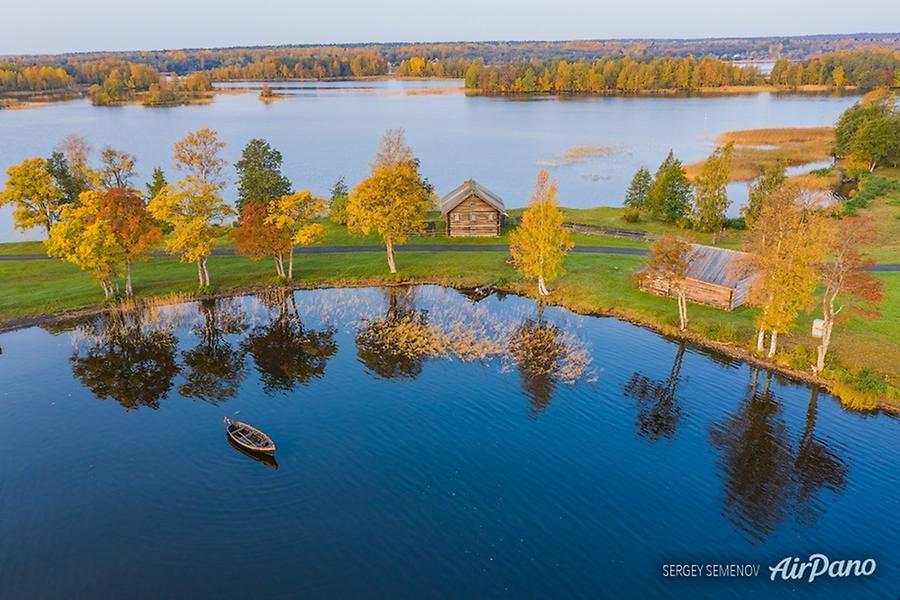
© AirPano
It took me two days to get there. The highway from my home to Medvezhyegorsk is just excellent. But the following 150 km turned out to be a pretty tough challenge. The road to Kizhi is being constructed at the moment; it is promised to be fulfilled in around three years.
I went to the museum having no contacts or friends. I thought that I would deal with the permits on the ground, as soon as concerns arise. That was a bit presumptuous approach but it worked out in Karelia. I was lucky to meet the right people. Having parked my road-train on the shore of the lake (that had good parking) and talked with volunteers who were conducting a survey for some foreign project, I quickly found an accommodation.
The host, Dmitry Bobrov, not only gave me a shelter in his house but also helped to make an appointment with the administration of the museum. It was very important because airspace above Kizhi is closed to all types of aviation. A regular helicopter sometimes comes here but all other vehicles are strictly prohibited at the 500-metre area around the island. That rule also applies to drones.
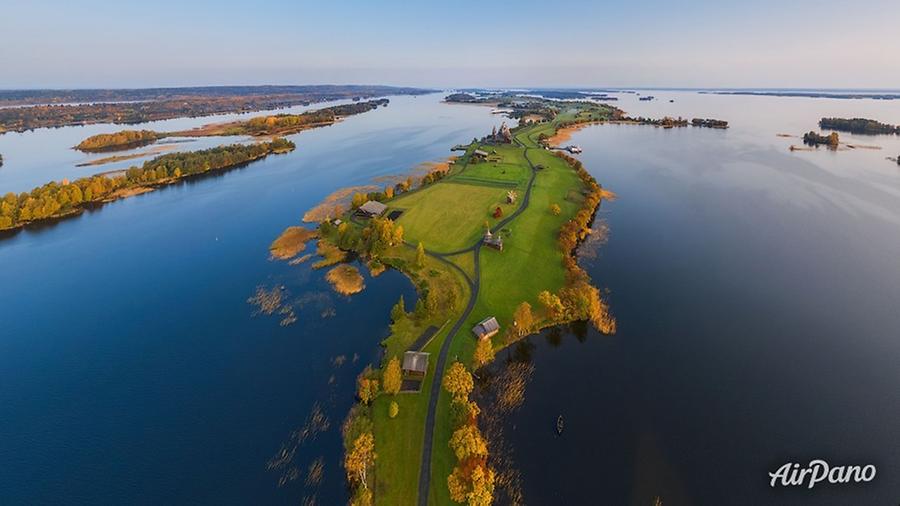
© AirPano
Despite this, almost every "Meteor" brings tourists who carry their drones and try to launch them to photograph the local landscapes. Security and National Guard are well trained in catching such violators. Basically, no fines are issued and they are just confined to warnings and polite requests not to fly above the island anymore. Such restrictions are explained by firefighting measures and concern for the safety of the museum's buildings: in the past, drone-related incidents occurred here.
I am delighted to note that the administration of the museum is pretty loyal to professional photographers and operators. I managed to get all the needed permits within quite a short period, so working routines soon started.

© AirPano
Summer is a tough period for landscape photographers: short nights, early sunrises and continuous sleep deprivation. And the northern summer is another type of a photographer's hell! The sunset session is over at around 10 p.m., while at 2 a.m. it is already time to catch the sunrise. At this point, you realize the joy of having your personal boat! You don't need to depend on anyone else and having this crazy sleeping schedule I could visit the island for the whole week without a break. That's how long the hunt for the proper light above the Transfiguration Church lasted.
A lot of words are told about the Church of the Transfiguration. But my opinion is that you should see it with your own eyes. No description is sufficient to give you even a small part of the excitement, which you can experience standing next to it.
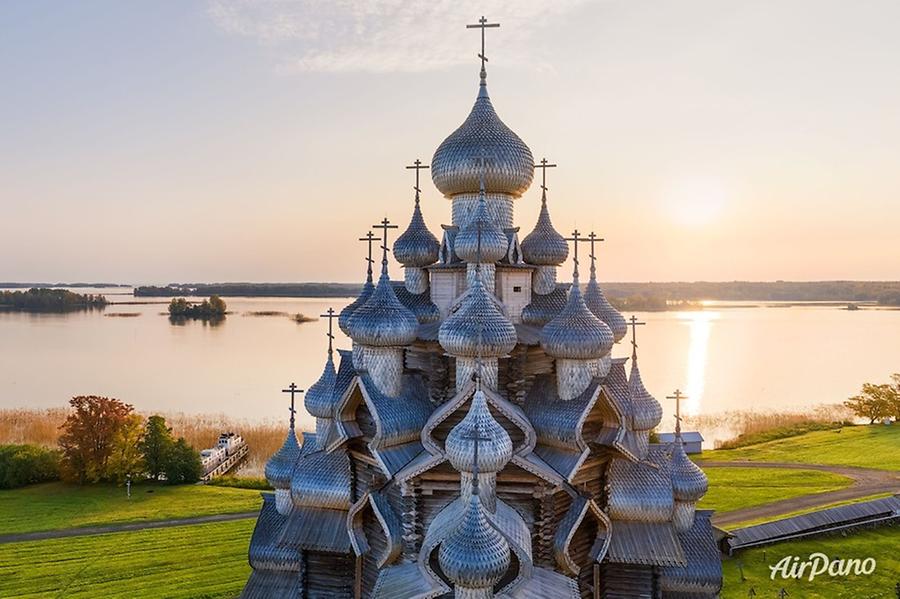
© AirPano
And if you are lucky enough to be invited inside and see the inner structure of this church... As an engineer, I felt an unspeakable delight when I saw it from the inside. I couldn't imagine that people at that time were able to create such incredible constructions!
As a result of this "solo" journey around Kizhi, we agreed with the museum direction that the filming would continue with the beginning of the golden autumn. And later, one sunny September morning, I met my colleagues at the railway station in Petrozavodsk. This time the AirPano team was reinforced by the presence of both our directors, Sergey Semenov and Sergey Rumyantsev. The recognized Russian aerial operator Anton Yelchaninov and the photographer Olga Shutova also joined the team.
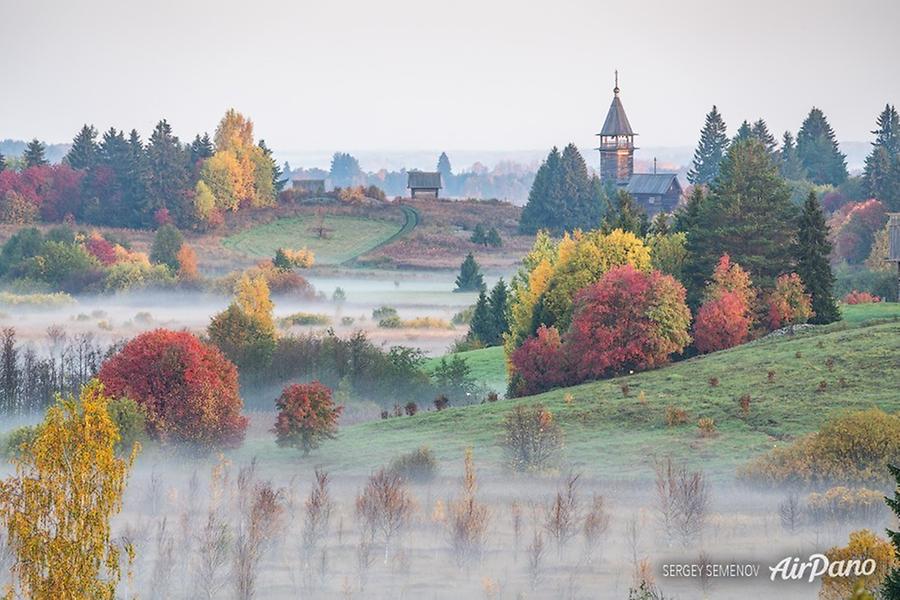
© AirPano
Perhaps the season of golden autumn is the best time for visiting Kizhi! We were doubly lucky: locals said they had not witnessed such stable sunny weather in September for years. Having found this favour from nature, we started working.
Together with Anton, we occupied the airspace, while the other part of our team was busy with capturing landscapes. Sometimes our paths crossed, which resulted in certain confusion.
One situation occurred when we were exploring the inner intricacies of the church. Dmitry, a museum employee accompanying us during our work, showed us a small window used as a technical manhole in the upper dome. The view from this window was stunning! Of course, all of us wanted to see the outside. We could do it only one be one because of the size of the manhole. At the same time, Anton was filming the cathedral closely using a drone. What an incredible thing to happen: when the drone was flying close to the dome, Sergey Semenov leaned halfway through the window! As soon as he saw the drone, he didn't hesitate to greet our aerial operator. This scene looked like a Jack-in-the-box, such a funny action. Later in the evening, we looked through the pictures and arrived at a common vision that this scene could not be prepared in advance and done on purpose: it would have needed more than a dozen takes.
Special thanks must be expressed to the museum employees who prepared the scenes of household activities and daily routines of the traditional Karelian village specially for our film. It is also worth mentioning that the genuine hospitality of Karelia can only be compared to the one I saw in the North Caucasus. It was a pleasant surprise for me. I only wish that more people could take part in our filming: unfortunately, pandemic restrictions were taking place here.
One week in this museum went by quickly. A short Indian summer was over, it was time to pack my road-train with equipment and start my way back home. But a clear thought has stayed in the mind: we will definitely be back to Kizhi next year or even in winter. Because what you can see here is a genuine masterpiece of the ancient wooden craft and the magnificence of Northern Russian architecture. It is our history!
In the northern part of Lake Onega, there is an island known all over the world: it is named Kizhi. A nature reserve protecting rare animal and plant species was created here. But definitely, the major landmark of the island is its architectural complex, Kizhi State Open-Air Museum of History, Architecture and Ethnography.

© AirPano
The first inhabitants of this site, the Slavs, Karelians and Vepsians, started to reside on the island back in the 10th century. The etymology of the word Kizhi is uncertain. According to one version, it derives from the Vepsian word "kidz" ("moss growing on the bottom"). It is also possible that it came from another Vepsian word "kisi" meaning "place for games, celebrations".
In the 15th century, these lands became a part of the Grand Principality of Moscow and were first mentioned in the records as the pogost of Kizhi (enclosure of villages). Copper and iron ore deposits were found in this area giving the start for the industrial growth.
Centuries later, the majority of the settlements went into decline and a new chapter in the history of Kizhi began in 1966 when the decision was made to restore two wooden churches and a belfry. Then wooden architectural monuments from other historical villages of Zaonezhie were moved here so now it has become one of the greatest open-air museums in Russia.
In 1990, the entire architectural ensemble of the Kizhi Pogost was listed as a UNESCO World Heritage site. It is a stunning example of the Old Russian architectural art and the ultimate mastery of craftsmanship.

© AirPano
The most noticeable construction is the Church of the Transfiguration built in 1714 on the site of the old one which was burnt by lightning. The church rises at 37 meters. The whole wooden frame was made without using a single nail: several were used only for fixing certain details on domes. The church counts 22 of them arranged in tiers: it creates an astonishing rhythmic effect.
Another great monument of Kizhi is the Church of the Intercession of the Virgin built in 1694 and rebuilt 70 years later. Configured as a prolonged rectangle, it is 32 meters long and 8 meters wide with a height of 26 meters.
The bell-tower of the Kizhi Pogost was constructed in 1863 on the site of the previous one, as well. Wood is a good material which has certain disadvantages: its main enemies are time and the severe northern climate. Over the past centuries, the belfry was repeatedly restored, most recently in 1991.

© AirPano
Another interesting feature of Kizhi is the fence: it is a timber construction with a gable roof resting on a tall boulder basement and stretching for around 300 meters. The main entrance with a double-leaf gate faces east near the Church of the Intercession.
Among other magnificent monuments of the ancient Russian architecture on Kizhi island, there is an eight-winged windmill designed by a peasant N.Bikanin in 1928. It was brought here from Volkostrov village. As for the Church of the Resurrection of Lazarus, it is smaller and not as refined as the neighbouring buildings but is one of the most ancient wooden churches in Russia: it was built in the second half of the 14th century by the founder of the Muromsky Monastery.
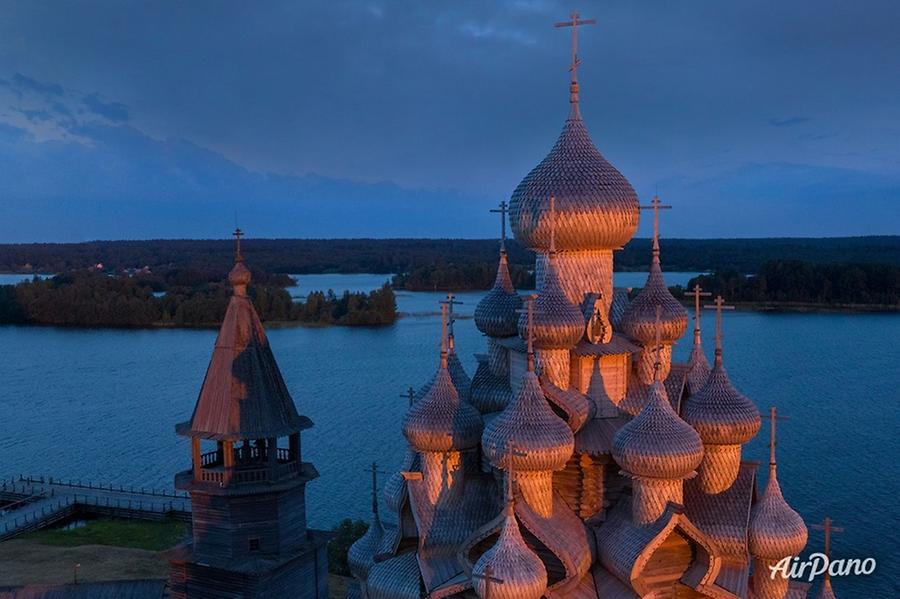
© AirPano
The island possesses around 70 monuments such as bell-towers, peasant dwellings, farm buildings telling the history of Russia. The virtual journey created by AirPano will let you feel the unique atmosphere of this place, admire the skilful creations of the ancient masters and enjoy harmonious landscapes of the Russian North.
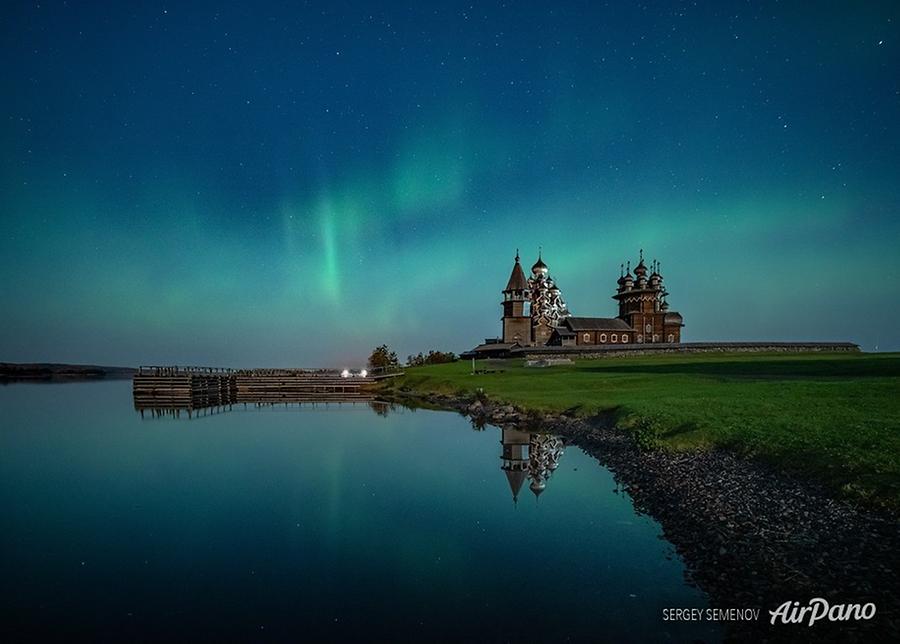
© AirPano
We express our gratitude to the staff of the Kizhi Museum and personally to the director E.V. Bogdanova, as well as Dmitry Dyugay for the help in organizing the filming.
17 panoramas of Kizhi. The wooden wonder of Russia